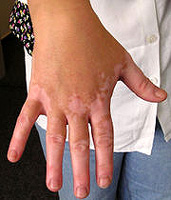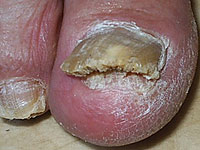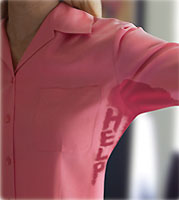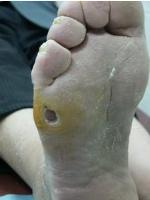Vitiligo (Vitiligo) is one of the most unexplored and complex diseases. It may occur at any age and manifests itself on white spots, that is, areas of pigment deprived - melanin.
Content
Prone to this disease most often people up to 20 years. Currently, Vitiligo is interpreted as hereditary pathology. Selective changes in the functional state of the nervous system, metabolic processes and dysfunction contribute to genetic consolidation.
Symptoms of Disease
 Externally, the disease represents a disorder of skin coloring in the form of white spots, sharply outlined, inclined to peripheral growth and most often surrounded by a zone of increased pigmentation. Hair on the affected areas is also losing pigment — become discolored, gray. Mucous membranes remain free from rashes. The disease lasts for many years, new and new foci appear, but often the process stops, limited to several foci.
Externally, the disease represents a disorder of skin coloring in the form of white spots, sharply outlined, inclined to peripheral growth and most often surrounded by a zone of increased pigmentation. Hair on the affected areas is also losing pigment — become discolored, gray. Mucous membranes remain free from rashes. The disease lasts for many years, new and new foci appear, but often the process stops, limited to several foci.
Is there any danger?
It all depends on the factor that caused vitiligo. It may be a consequence of dysfunction of endocrine, immune systems, or imbalance of some exchange processes. The danger comes from both the factor that caused vitiligo and from the disappearance of one of the protective barriers to the skin, which is a pigment melanin.
The disease is due to the loss by individual areas of skin ability to generate a pigment due to the absence of a tyrosinase enzyme in melanocytes catalyzing the pigment formation process. In the development of the disease, genetic and neuroendocrine factors can play a certain role (mental injuries, adrenal dysfunction, thyroid and pop iron).
Treatment of vitiligo
Treatment is usually ineffective. As the world experience shows, vitiligo is impossible to heal with some one drug, one method or even a combination. At the same time, the achieved positive effect on average is 30-40%.
-
It is possible to use repeated courses of photosensitizers (ammifurin, Beroxane) in combination with ultraviolet irradiation, including the PuU-therapy.
-
It is necessary to apply vitamins of groups in.
-
Applications of corticosteroidal masses.
-
Correction of identified neuroendocrine disorders.
-
Preventive measures to comply with the household gentle regime aimed at eliminating adverse effects provoking the emergence and distribution of new lesions on the skin.
-
Cosmetics and methods masking cosmetic flaws are also intended for the prevention of psychological disorders
Of course, treatment should be carried out under the supervision of an experienced specialist. Vitiligo is impossible to cure finally, but to stop the distribution process of spots is quite possible. After consulting a specialist who will check the condition of your skin, instructions and medications for treatment will be issued.









